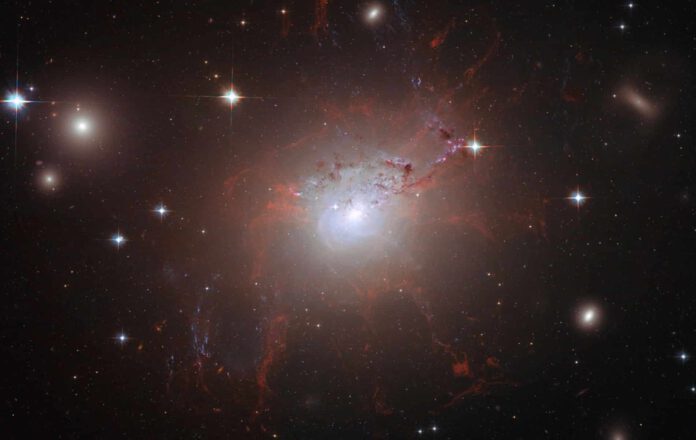
For some time now, astronomers have hypothesized that gas, once heated by a supermassive black hole and subsequently flowed to the outer regions of the galaxy and cooled, could retrace its steps back to the black hole. This return, though suspected, had never previously been observed and thus remained unproven. That is until now.
An Unexpected Discovery
Three astronomers, quite accidentally, discovered cooled carbon monoxide gas moving toward the central supermassive black hole in the iconic galaxy NGC 1275. Their findings, as reported in the journal Nature Astronomy, are based on earlier measurements taken at the ALMA observatory.
According to lead researcher Tom Oosterloo, investigating the gas cycle of a black hole wasn’t their original intention. “We came upon these measurements quite by chance. We were conducting a different study on NGC 1275 using different telescope data, and were perusing the literature to see what others had written about NGC 1275. We noted a Japanese team, using the ALMA in 2019, had observed NGC 1275, but the quality of the images was poor; there were severe distortions. As a consequence, you couldn’t see what was happening in NGC 1275 based on their images. By calibrating the data differently, we were able to significantly enhance the quality of the ALMA images, revealing a whole new universe to us,” he recounted.
Sharper Focus
Oosterloo and his colleagues successfully obtained images three times sharper, revealing the flow of cooled carbon monoxide gas. Consequently, the circle of a black hole’s gas cycle closed. This is significant because “NGC 1275 is a well-known galaxy, and research on the activity of its black hole and the effects this activity has on the evolution of the galaxy have been underway for decades. Over the years, a reasonably complete picture of how the activity cycle in NGC 1275 works has been formed. A single puzzle piece was still missing in our observations. Our study provided that final piece, confirming the model.”
The Cycle
Astronomers have long suspected that supermassive black holes, especially the black hole in NGC 1275, have a gas circulation cycle. In this cycle, gas near the black hole is first heated and then transported to the outer regions of the galaxy, where it cools down again for the next turn.
Cooled Gas Returns
It was previously theorized by astronomers that when gas moves away from the black hole, the black hole becomes less active, and cooled gas can then return to the black hole. Oosterloo and his team were able to confirm this theory.
The Importance of This Research
The ability to confirm that gas previously heated by the black hole, which traveled to the outer regions of the galaxy and cooled down, can return to the black hole is significant. “The essence of our result is that a significant portion of the gas that flows away eventually does flow back to the black hole. Thus we observe a kind of cycle around a black hole of inflow and outflow. A better understanding of this cycle will aid in understanding how the balance between inflow and outflow changes over time.”
Star Formation
This new research not only leads to better understanding of how the activity of black holes is regulated but indirectly also has implications for star formation and the evolution of galaxies.
Although the researchers focused solely on NGC 1275 in their study, they believe that black holes in similar galaxies also have the same gas cycle. Oosterloo noted, “We will conduct further observations on other galaxies to verify this.”











